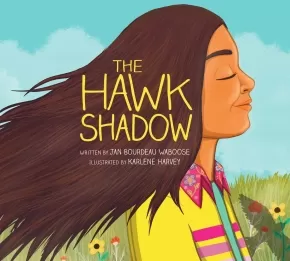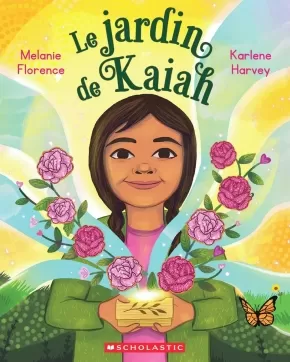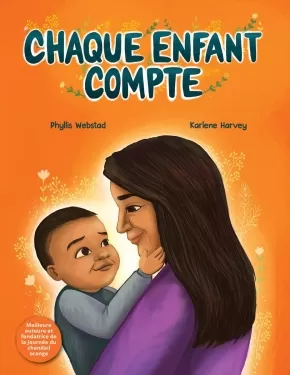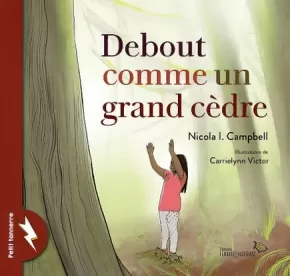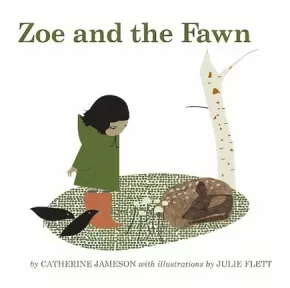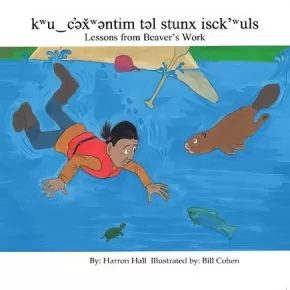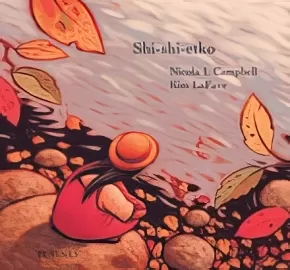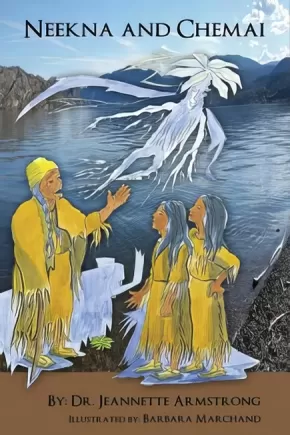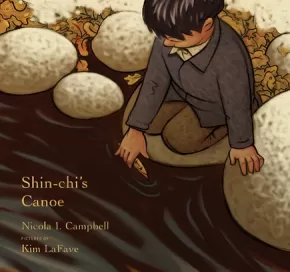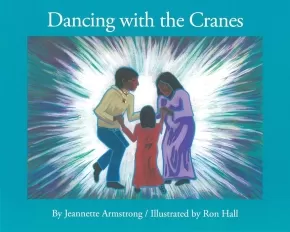
Syilx (Okanagan)
1
-
15
of
24 Results;
Sort By
Go To
of 2
Maggie Lou Meets Her Match
$14.99
Format:
Paperback
Text Content Territories:
Indigenous Canadian; Métis;
ISBN / Barcode: 9781773067742
Synopsis:
Synopsis:
In this sequel to Maggie Lou, Firefox, the irrepressible Maggie Lou acquires a new cousin, and a horse - both of whom have minds of their own.
When Uncle Bobby gets married, Maggie Lou suddenly finds herself with a new cousin, Rosie. Rosie is the same age as Maggie. She also has a fabulous head of curls, although hers are red. And Rosie knows everything about horses and riding - something Maggie Lou has longed to do.
A rivalry sparks between the girls from the start at Uncle Bobby and Aunt Bonnie's wedding, which features an all-you-can-eat dessert table, as well as lots of energetic dancing. On Rosie's horse farm, Maggie experiences her share of humiliations as she learns how to ride on a pony so short that her feet can touch the ground.
Eventually the cousins become allies and wreak some hair-raising mischief, including a secret midnight horseback ride. And in the end they are joined by friends and family to train, hilariously, for the famous Otipîm'sowak Race - a Métis voyageur relay - carrying on a family tradition.
Throughout it all, Maggie remains stubborn and enthusiastic, as she navigates the new challenges of defeat, rivalry and family change.
Reviews
"A high-energy love letter to rambunctious girls, big families, and Métis culture." — Kirkus Reviews, June 2025
"Full of hilarious high jinks yet bursting with heart ... This book shines with realistic sibling relationships, funny dialogue, strong intergenerational bonds, and a steadfast connection to community and culture."— Booklist, July 2025
Educator & Series Information
Recommended for ages 9 to 12.
This book is the second book in the Maggie Lou series.
Key Text Features: chapters; character drawings; dialogue; glossary; illustrations.
Additional Information
228 pages | 5.00" x 7.50" | b&w illustrations | Paperback
Les enseignements du tambour
$12.95
Format:
Hardcover
Text Content Territories:
Indigenous Canadian; First Nations; Nuu-chah-nulth (Nootka);
ISBN / Barcode: 9781778540493
Synopsis:
Synopsis:
Le tambour est un symbole spécial dans plusieurs cultures autochtones. Dans ce livre illustré en rimes, le jeune Ren reçoit un tambour confectionné par sa mère, qui l’aide à apprendre plusieurs choses sur lui-même et sa culture. Adaptation du livre à succès, Joue du tambour avec cœur de l’auteur nuu-chah-nulth Ren Louie pour les 4 à 6 ans.
Educator Information
Recommended for ages 4 to 6.
This book is available in English here: Teachings of the Drum
Additional Information
24 pages | 7.87" x 7.24" | Hardcover
The Hawk Shadow
$23.99
Format:
Hardcover
Text Content Territories:
Indigenous Canadian; First Nations; Anishinaabeg; Ojibway;
ISBN / Barcode: 9781525310843
Synopsis:
Synopsis:
A pitch-perfect story about sibling bonds and Anishinaabe cultural traditions, from the bestselling author of SkySisters.
Serenity is following her brother, Big Ed, to his fishing spot on Hawk River. Big Ed explains that the river is named for the Hawk, Gekek, the Keepers of the river and their Protectors. “They see things far off in the distance, things we can't,” he tells Serenity. Later, when Big Ed gets in trouble while fishing, Serenity follows the Hawk's shadow to come to her brother's aid. Bestselling author Jan Bourdeau Waboose showcases Indigenous storytelling traditions in this compelling picture book featuring Ojibwe words and cultural practices. Karlene Harvey's brightly colored illustrations stunningly capture the natural world of the bush. The sibling relationship, full of teasing and admonitions, is pitch-perfect, and will be relatable to readers of any age. This captivating book, with its rich narrative and riveting climax, is a wonderful choice for reading aloud. It's an excellent accompaniment to social studies lessons on cultures, local and global communities, and Indigenous Peoples. It also offers a perfect opportunity to encourage children to notice the natural world where they live.
Reviews
"The Hawk Shadow is a rich and tender story by Jan Bourdeau Waboose, an Anishinaabe author from the Bear Clan in Northern Ontario, with illustrations by Karlene Harvey, a Tsilhqot’in and Syilx artist from Vancouver. It follows Serenity and her big brother, Big Ed, as they journey to Hawk Lake to fish. Along the way, Serenity meets the Hawk Shadow, a river guardian who sees beyond the visible world and guides her through a moment of crisis. Rooted in Waboose’s family and community traditions, the story is infused with Indigenous Knowledge, love, and respect for the land. The Hawk Shadow is more than a tale of kinship and adventure; it’s a poetic reflection of Indigenous Ways of Knowing and Being." - Anika L., Middle School Teacher, Indigenous Books for Schools
Educator Information
Recommended for ages 4 to 7.
This book is included in the Indigenous Books for Schools database from the Association of Book Publishers of BC. It is recommended for K to 6 classrooms for English Language Arts.
Additional Information
32 pages | 10.00" x 9.00" | Hardcover
Teachings of the Drum
$12.95
Format:
Hardcover
Text Content Territories:
Indigenous Canadian; First Nations; Nuu-chah-nulth (Nootka);
ISBN / Barcode: 9781778540387
Synopsis:
Synopsis:
The drum is a special symbol in many Indigenous cultures. In this rhyming picture book, young Ren is given a handmade drum by his mother that help to teach him many things about himself and his culture.
An adaptation of the best-selling book, Drum from the Heart, by Indigenous author Ren Louie for ages 4-6.
Educator Information
Recommended for ages 4 to 6.
This book is an adaptation of Drum from the Heart for ages 4 to 6.
This book is available in French: Les enseignements du tambour
Additional Information
24 pages | 8.50" x 7.50" | Hardcover
Le jardin de Kaiah
$10.99
Format:
Paperback
Text Content Territories:
Indigenous Canadian; First Nations; Cree (Nehiyawak);
ISBN / Barcode: 9781443189453
Synopsis:
Synopsis:
L’histoire édifiante d’une jeune fille qui se rapproche de sa grand-mère bien-aimée grâce à l’art du perlage.
En se réveillant par un matin maussade, Kaiah se sent aussi froide et grise que le jour. Sa grand-maman lui manque, et elle a envie de la retrouver. Sans sa grand-mère, la vie de Kaiah n’a pas de sens. Heureusement, Kaiah peut ouvrir sa précieuse boîte de perles, et grâce à la beauté qu’elle renferme, la jeune fille retrouve sa grand-mère dans un jardin plein de couleurs et d’amour.
Cette magnifique histoire de l’autrice primée Melanie Florence célèbre l’amour universel entre une grand-mère et sa petite-fille. Illustré par Karlene Harvey, une brillante artiste Tsilhqot’in et Syilx, ce livre comporte également un supplément d’information sur la tradition autochtone du perlage.
Educator Information
Recommended for ages 3 to 8.
This book is available in English: Kaiah's Garden
Additional Information
32 pages | 8.02" x 10.00" | Paperback
Kaiah's Garden
$19.99
Format:
Hardcover
Text Content Territories:
Indigenous Canadian; First Nations; Cree (Nehiyawak);
ISBN / Barcode: 9781443190251
Synopsis:
Synopsis:
An uplifting story of a girl’s connection to her beloved grandmother through the beadwork art they created together.
As she wakes up one dull morning, Kaiah feels as cold and grey as the day. She longs to be with her grandmother again. Kaiah’s life doesn’t feel right without her. But through Kaiah’s treasured bead box — and the beauty it holds — she is with her grandmother, in a garden that is full of colour and love.
This beautiful story from award-winning author Melanie Florence celebrates the universal love between grandmother and child. Featuring bright, breathtaking illustrations from Tsilhqot’in and Syilx artist Karlene Harvey, the book also features back matter about the Indigenous tradition of beading.
Educator Information
Recommended for ages 3 to 8.
This book is available in French: Le jardin de Kaiah.
Additional Information
32 pages | 8.35" x 10.27" | Hardcover
Maggie Lou, Firefox
$14.99
Format:
Paperback
Text Content Territories:
Indigenous Canadian; Métis;
ISBN / Barcode: 9781773068817
Synopsis:
Synopsis:
Maggie Lou's grandpa doesn't call her Firefox for nothing. She's always finding ways to make life more interesting - even if this means getting into big trouble.
"Keep taking up space," Maggie Lou's mother says. You're only making room for the girls behind you."
When her grandfather Moshôm finally agrees to teach her how to box, she decides that the rank odors, endless drills and teasing won't stop her from wearing a tutu to the gym. Joining her father's construction crew uncovers a surprising talent - besides learning how to use a broom - and a great source of scrap wood to build a canine hotel for her dogs. And when she turns thirteen, she figures out an ingenious way to make some smokin' good camouflage to wear on her first deer hunt, where she joins a long family tradition.
Through it all she is surrounded by her big extended gumbo soup of a family, pestered by annoying younger siblings, and gently guided by her strong female relatives - her mother, her kokhom and her ultra-cool cousin Jayda. "Keep taking up space," Maggie's mother says. "You're only making room for the girls behind you."
A heroine for today, Maggie Lou discovers that with hard work and perseverance she can gain valuable new skills, without losing one iota of her irrepressible spirit.
Reviews
"Métis author Bowes weaves cultural elements, including Northern Michif words, into this charming story that skillfully captures sweetly hilarious and loving everyday moments. Black-and-white illustrations enhance the text. An amusing story showcasing Métis humor at its finest." - Kirkus, STARRED REVEIW
Educator & Series Information
Recommended for ages 9 to 12.
This is the first book in the Maggie Lou series.
Key Text Features: author's note, biographical note, glossary, chapters, dialogue, epigraph, illustrations.
Includes some Northern Michif words and a glossary.
Additional Information
220 pages | 5.00" x 7.50" | b&w illustrations | Paperback
Chaque enfant compte
$24.99
Format:
Hardcover
Text Content Territories:
Indigenous Canadian; First Nations; Inuit; Métis;
ISBN / Barcode: 9781778540172
Synopsis:
Synopsis:
Apprenez ce que veut dire la phrase « Chaque enfant compte ». Phyllis Webstad, la fondatrice de la Journee du chandail orange, presente un apercu de ce mouvement sincere. Chaque enfant compte honore l'histoire et la resilience des peuples autochtones sur l'Ile de la Tortue et nous permet de tous cheminer vers la verite et la reconciliation. Si vous etes un survivant des pensionnats ou un survivant intergenerationnel, vous comptez. Pour les enfants qui ne sont pas revenus a la maison, vous comptez. L'enfant en chacun de nous compte. Chaque enfant compte.
Educator Information
Recommended for ages 6 to 10.
Find the accompanying Teacher Lesson Plan here: Chaque enfant compte plan de cours
This book is available in English: Every Child Matters
Additional Information
44 pages | 8.62" x 11.18" | Hardcover
Every Child Matters
$24.99
Format:
Hardcover
Text Content Territories:
Indigenous Canadian; First Nations; Inuit; Métis;
ISBN / Barcode: 9781778540165
Synopsis:
Synopsis:
Learn the meaning behind the phrase, ‘Every Child Matters.'
Orange Shirt Day founder, Phyllis Webstad, offers insights into this heartfelt movement.
Every Child Matters honours the history and resiliency of Indigenous Peoples on Turtle Island and moves us all forward on a path toward Truth and Reconciliation.
If you're a Residential School Survivor or an Intergenerational Survivor - you matter. For the children who didn't make it home - you matter. The child inside every one of us matters. Every Child Matters.
Reviews
"Every Child Matters speaks to all Indigenous Peoples - past and present - whose lives have been impacted by the residential school system. Phyllis and Karlene beautifully honour the unity, strength and resolve shared by Survivors, their families and their communities. Residential schools took our children and tried to break their vibrant spirits. With this book, the children of today can learn the truths of this history and how they can play a part in making sure every child matters." – Stephanie Scott, Executive Director of the National Center for Truth and Reconciliation
“…a brilliantly illustrated and meticulously written narrative. It is a must read.” - Chief Dr. Robert Joseph, Gwawaenuk, Elder, Reconciliation Canada
Educator Information
Recommended for ages 6 to 10.
Find the accompanying Teacher Lesson Plan resource HERE!
This book is available in French: Chaque enfant compte
Additional Information
44 pages | 8.50" x 11.00" | Hardcover
Drum from the Heart
$16.99
Format:
Paperback
Text Content Territories:
Indigenous Canadian; First Nations; Nuu-chah-nulth (Nootka);
ISBN / Barcode: 9781989122884
Synopsis:
Synopsis:
When he is gifted a handmade drum by his mother, Ren learns the teachings of the drum that she also passes down to him. Ren discovers that through this special drum, he is able to connect to his culture and find a confidence in his voice to joyfully share in singing the traditional songs of his Nuu-chah-nulth Nation.
Reviews
“A beautifully told story that shows the power of song and ceremony for our people. As well as the importance of family in the passing of traditions and the unconditional love and support each member of the family gives. A truly inspiring story for our youth to learn the songs of their families and nations.” - Tiffany Adams, Nlaka’pamux, Indigenous Educator
Educator Information
A Teacher Lesson Plan is available HERE!
This resource is available in French: Joue du tambour avec coeur
An adaptation of this book for children ages 4 to 6 is available: Teachings of the Drum
Additional Information
34 pages | 8.50" x 11.00" | Paperback
Debout comme un grand cedre
$19.95
Artists:
Format:
Hardcover
Text Content Territories:
Indigenous Canadian; First Nations; Salish; Coast Salish; Sto:lo; Interior Salish; Nlaka'pamux (Thompson);
ISBN / Barcode: 9782923926759
Synopsis:
Synopsis:
Quand vous faites une marche en nature, qui voyez-vous? Qu’entendez-vous?La conteuse Nicola I. Campbell donne sens aux mots « se tenir debout comme un grand cèdre » dans une touchante exploration au sein de la nature sauvage. On y apprend le nom des animaux en langues nle?kepmxcín et halq’emeylem ainsi que les enseignements qu’ils ont à nous offrir.Autrice de Shi-shi-etko et de La pirogue de Shin-chi, deux textes primés, Nicola I. Campbell nous offre ici un album pour enfants magnifiquement illustré par l’artiste Carrielynn Victor, dans une langue poétique qui nous invite à célébrer l’environnement, le développement durable et le sentiment d’appartenance à la terre.
Educator Information
Dès 6 ans
This book is available in English: Stand Like a Cedar
Additional Information
Hardcover
Zoe and the Fawn (PB)
$12.95
Artists:
Format:
Paperback
Text Content Territories:
Indigenous Canadian; First Nations; Salish; Interior Salish; Syilx (Okanagan);
Grade Levels: Preschool; Kindergarten;
ISBN / Barcode: 9781894778435
Synopsis:
Synopsis:
An adventure begins when Zoe finds a lone fawn in the forest and helps search for its mother. But who could the mother be? A bunny? A fish? Join Zoe and her father as they encounter many woodland animals and learn their Native names along the way.
Educator Information
Recommended for ages 3 to 5
Additional Information
32 pages | 8.00" x 8.00" | Paperback
Stand Like a Cedar
$21.95
Artists:
Format:
Hardcover
Text Content Territories:
Indigenous Canadian; First Nations; Salish; Interior Salish; Nlaka'pamux (Thompson); Coast Salish; Sto:lo;
ISBN / Barcode: 9781553799214
Synopsis:
Synopsis:
When you go for a walk in nature, who do you see? What do you hear?
Award-winning storyteller Nicola I. Campbell shows what it means “to stand like a cedar” on this beautiful journey of discovery through the wilderness. Learn the names of animals in the Nłe7kepmxcín or Halq’emeylem languages as well as the teachings they have for us. Experience a celebration of sustainability and connection to the land through lyrical storytelling and Carrielynn Victor’s breathtaking art in this children’s illustrated book.
Discover new sights and sounds with every read.
Reviews
"Stand Like a Cedar is a work of grace and dignity, a celebration of land, family, and knowing who you are and where you come from and being so grateful for everything you’ve been given. Bravo, Nicola Campbell and Carrielynn Victor for creating this treasure. I love it."—Richard Van Camp, author of Little You and A Blanket of Butterflies
"Campbell’s rhythmic writing is wonderful, conveying important messages about the environment and family. Victor’s vibrant renderings accompany the engaging text nicely. Bold illustrations portray elements such as weather, nature, and animals alongside evocative details like glowing skylines. An Indigenous girl shares vivid lessons in this lovely, thoughtful environmental tale." —Kirkus Reviews
"Stand Like a Cedar is a story that connects the journey of building connections through a journey in the wilderness. Through the blended use of the Nłeʔkepmxcín and Halq'emeylem languages, readers are exposed to the healing that takes place in nature. The lyrical storytelling celebrates the healing and strength that comes from building one’s connections to their own journey." - The Dalai Lama Center
Educator Information
Recommended for ages 6 to 9.
Learn the names of animals in the Nłe7kepmxcín or Halq’emeylem languages as well as the teachings they have for us.
Includes a glossary of phrases and a translation guide.
Includes a page of back matter on Coastal and Interior Salish Languages.
This book is available in French: Debout comme un grand cedre
Additional Information
40 pages | 8.12" x 7.75"
kʷu‿c̕əx̌ʷəntim təl stunx isck’ʷuls / Lessons From Beaver’s Work
$15.95
Artists:
Format:
Paperback
Text Content Territories:
Indigenous Canadian; First Nations; Salish; Interior Salish; Syilx (Okanagan);
ISBN / Barcode: 9781926886688
Synopsis:
Synopsis:
Beaver shares his teachings on how he shapes the land.
kʷu‿c̕əx̌ʷəntim təl stunx isck’ʷuls / Lessons From Beaver’s Work teaches children through storytelling to hold reverence for all life forms. The book depicts a conflict between Tapit, a rancher, and stunx (beaver), as they both try to meet their water needs. The touching humanity of stunx (Beaver) softens Tapit’s outlook, as he reminds Tapit that he is not the only one that depends on water.
Educator & Series Information
Recommended for ages 10 to 13.
Author Harron Hall has written several children's books that incorporate her Indigenous heritage and her deep commitment to protecting the land and water, including The Water Sings to Suli?, Water Changeling and We Go with Muskrat to Those Living Underwater.
This fictional story teaches the importance of watersheds and protecting our water systems.
Includes words in n'syilxwcn, the language spoken by the Sylix/Okanagan peoples.
This book is part of the Follow the Water series.
Additional Information
26 pages | 8.00" x 8.00"
kəxntim sʕanixʷ k̕əl nixʷtitkʷ acxʷəl̕xʷalt / We Go With Muskrat to Those Living
$15.95
Artists:
Format:
Paperback
Text Content Territories:
Indigenous Canadian; First Nations; Salish; Interior Salish; Syilx (Okanagan);
ISBN / Barcode: 9781926886695
Synopsis:
Synopsis:
Muskrat takes the children through all the many fish that live in the water of the Okanagan valley.
kəxntim sʕanixʷ k̕əl nixʷtitkʷ acxʷəl̕xʷalt / We Go With Muskrat to Those Living Underwater is an interactive story with sʕanixʷ (Muskrat) in the lead, allowing readers to learn both the n’syilxwcn and English names of underwater creatures living in the Okanagan Valley. The book seamlessly combines beautiful imagery with amusing descriptions as Muskrat introduces a diverse set of underwater creatures.
Educator & Series Information
Recommended for ages 6 to 9.
Author Harron Hall has written several children's books that incorporate her Indigenous heritage and her deep commitment to protecting the land and water, including The Water Sings to Suli?, Water Changeling and Lessons from Beaver's Work.
Learn the names of many fish and aquatic creatures that live in the Okanagan Valley in n’syilxwcn (the language spoken by the Sylix/Okanagan peoples) and English.
Features bright and colorful illustrations from Indigenous artist Ron Hall.
This book is part of the Follow the Water series.
Additional Information
40 pages | 8.00" x 8.00"
skɬp’lk’mitkw / Water Changeling
$15.95
Text Content Territories:
Indigenous Canadian; First Nations; Salish; Interior Salish; Syilx (Okanagan);
ISBN / Barcode: 9781926886664
Synopsis:
Synopsis:
The journey and transformation of water from the tops of the mountains down through the rivers and streams, told from a Syilx perspective.
skɬp’lk’mitkw / Water Changeling is the story of the natural water cycle from a Syilx traditional ecological knowledge perspective. The story features a water girl named skɬp’lk’mitkw who longs to visit with her grandparents. She receives help from newfound friends who change her into rain, hail and snow so she can reach her grandparents.
Educator & Series Information
Recommended for ages 7 to 10.
Author Harron Hall has written several children's books that incorporate her Indigenous heritage and her deep commitment to protecting the land and water, including The Water Sings to Suli?, We Go with Muskrat to Those Living Underwater and Lessons from Beaver's Work.
Learn about the water cycle using the n'syilxcen (the language spoken by the Sylix/Okanagan peoples) and English languages. This book includes some words in n'syilxcen, but it is not a dual-language resource.
Learn about the water cycle through a fictional story.
This book is part of the Follow the Water series.
Additional Information
32 pages | 8.00" x 8.00"
iʔ siwɬkw nkwancinəm k̕əl suliʔ / The Water Sings to Suli?
$15.95
Format:
Paperback
Text Content Territories:
Indigenous Canadian; First Nations; Salish; Interior Salish; Syilx (Okanagan);
ISBN / Barcode: 9781926886671
Synopsis:
Synopsis:
iʔ siwɬkw nkwancinəm k̕əl suliʔ / The Water Sings to Suliʔ is an original story with a universal message, shedding light on the importance of water as a living entity. The story features a young girl named suliʔ, who hears the song of the water calling for her while playing outside. suliʔ ventures out of her yard and into the forest. Along the way she meets an unexpected magic water child. The water child entrusts suliʔ with an important message to share with the world.
Educator & Series Information
Recommended for ages 4 to 6.
Author Harron Hall has written several books for children that incorporate her Indigenous heritage and her deep commitment to protecting the land and water.
Includes words in n'syilxwcn.
This book is part of the Follow the Water series.
Additional Information
54 pages | 8.00" x 8.00"
A Day With Yayah
$21.95
Artists:
Format:
Hardcover
Text Content Territories:
Indigenous Canadian; First Nations; Salish; Interior Salish; Nlaka'pamux (Thompson);
ISBN / Barcode: 9781926890098
Synopsis:
Synopsis:
Set in the Okanagon, BC, a First Nations family goes on an outing to forage for herbs and mushrooms. Grandmother passes down her knowledge of plant life to her young grandchildren.
Reviews
"A Day With Yayah is a story sharing the special relationship that is built when a child learns from their Elders. It centers around an Indigenous family out on the land picking herbs and the Grandmother passing down her knowledge." - The Dalai Lama Center
Educator Information
Recommended for grades K-2 for the following subjects: Art Education, English Language Arts, Social Studies.
This resource offers a glimpse into the Nłeʔkepmx of the Nicola Valley in BC's Interior. A glossary of Nłeʔkepmxcin words appears at the back of the book.
Additional Information
32 pages | 9.25" x 10.25" | colour illustrations
Shi-shi-etko
$19.99
Artists:
Format:
Hardcover
Text Content Territories:
Indigenous Canadian;
ISBN / Barcode: 9780888996596
Synopsis:
Synopsis:
In just four days young Shi-shi-etko will have to leave her family and all that she knows to attend residential school.
She spends her last days at home treasuring the beauty of her world -- the dancing sunlight, the tall grass, each shiny rock, the tadpoles in the creek, her grandfather's paddle song. Her mother, father and grandmother, each in turn, share valuable teachings that they want her to remember. And so Shi-shi-etko carefully gathers her memories for safekeeping.
Richly hued illustrations complement this gently moving and poetic account of a child who finds solace all around her, even though she is on the verge of great loss -- a loss that native people have endured for generations because of the residential schools system.
This gentle story of a child on the verge of great loss was selected as the Aboriginal Children’s Book of the Year.
Awards
- Winner of the Anskohk Aboriginal Children's Book of the Year Award.
Educator Information
Recommended Grades: 1-10.
Curriculum Connections: Indigenous Studies, Visual Arts, Science, Health.
Recommended Authentic First Peoples resource K-9.
This illustrated children's story is recommended for English First Peoples Grades 10 for units pertaining to childhood through Indigenous writers' eyes and the exploration of residential schools and reconciliation through children's literature.
This book is available in French: Shi-shi-etko (French)
Additional Information
32 pages | 8.50" x 8.13"
La pirogue de Shin-chi
$12.95
Artists:
Format:
Paperback
Text Content Territories:
Indigenous Canadian;
ISBN / Barcode: 9782896118076
Synopsis:
Synopsis:
« Au bout du couloir, dans l’aile des petits garçons, Shin-chi était allongé dans son lit mais ne dormait pas. Il tenait précieusement sa petite pirogue dans la main. L’odeur parfumée du cèdre lui rappelait celle de son père. »Quand les Européens sont arrivés en Amérique, ils ont estimé que les Autochtones étaient des peuples non civilisés. Ils les ont chassés de leurs terres traditionnelles et les ont relégués dans des réserves. À la fin des années 1800, les gouvernements ont décidé de coloniser les enfants autochtones, de les forcer à s’adapter au mode de vie européen. Au Canada et aux États-Unis (mais également en Australie et en Nouvelle-Zélande), des lois furent adoptées obligeant les jeunes Autochtones à être éduqués dans des pensionnats autochtones.Dans ces établissements, les enfants apprenaient la culture, la religion et la langue des Européens. On leur donnait un nom européen. On leur enseignait le jardinage, l’agriculture et la menuiserie. On leur interdisait de parler à leurs parents ou à leurs frères et sœurs. Ils n’avaient pas non plus le droit de parler leur langue ni de pratiquer leurs coutumes. Certains enfants n’ont pu retourner chez eux qu’après de nombreuses années passées au pensionnat. D’autres n’y sont jamais retournés. Le Canada a compté environ 130 pensionnats indiens, et quelque 80 000 personnes vivant encore aujourd’hui y ont séjourné.
Educator Information
This book is available in English: Shin-chi's Canoe
Neekna and Chemai
$16.95
Artists:
Format:
Paperback
Text Content Territories:
Indigenous Canadian; First Nations; Salish; Interior Salish; Syilx (Okanagan);
ISBN / Barcode: 9781926886435
Synopsis:
Synopsis:
Neekna and Chemai are two little girls growing up in the Okanagan Valley in the time before European contact. Through these two friends, we learn about the seasonal life patterns of the Okanagan First Peoples. The girls spend time with Great-Grandmother, who tells them about important ceremonies, and they gather plants with Neekna's grandmother. Grandmother explains how bitterroot came to be an important food source, and why the people give a special ceremony of thanks at its harvest. Grandmother also tells the story of how a woman was changed to a rock to watch over the Okanagan Valley. Neekna understands how important it is that she has received the knowledge passed down for generations, from great-grandmother to grandmother to mother.
Educator Information
Recommended in the Canadian Indigenous Books for Schools 2019-2020 resource list as being useful for grades 2-7 in these subject areas: Career Education, English Language Arts, Social Studies.
Key Points:
- Learn about the seasonal life patterns of the Okanagan people.
- Armstrong's main goal in writing is to educate young people about Indigenous culture and history.
- Both educator and protector, Jeannette Armstrong is a professor of Indigenous Studies and a Canada Research Chair in Indigenous Philosophy. Her research into Indigenous philosophies and Okanagan Syilx thought and environmental ethics that are coded into Syilx literature has been recognized locally and globally, and she serves as an active member of the Okanagan Nation Alliance and the En’owkin Centre.
Additional Information
52 pages | 5.00" x 7.00" | 3rd Edition
Grandpa's Girls
$18.99
Artists:
Format:
Hardcover
Text Content Territories:
Indigenous Canadian; First Nations; Salish; Interior Salish; Nlaka'pamux (Thompson);
ISBN / Barcode: 9781554980840
Synopsis:
Synopsis:
A young girl delights in a visit to her grandpa's farm. She and her cousins run through the fields, explore the root cellar where the salmon and jars of fruit are stored, swing on a rope out the barn loft window, visit the Appaloosa in the corral and tease the neighbor's pig. The visit is also an opportunity for this child to ask Grandpa what her grandmother, Yayah, was like, and to explore the "secret room," with its old wooden trunk of ribbons, medals and photos of Grandpa in uniform.
There is a wonderful blend of fun and family history in this visit to a grandparent, and the realization that there can be some things about the people we know and love that will always remain a mystery. But above all, there's nothing like being with Grandpa.
In her two previous picture books, Shi-shi-etko and Shin-chi's Canoe, Nicola Campbell worked with elders and survivors of residential schools, documenting the tragic experiences that many endured. This new book, based on her own childhood memories, is a sunny, joyful story, vibrantly illustrated by Kim LaFave.
Reviews
"Grandpa’s Girls follows a group of four cheerful Interior Salish cousins let loose on their grandfather’s sprawling B.C. farm.... The book is a vicarious pleasure for anyone who ever wished they’d once had a hay loft to swing from, a pig to tease, or a cobwebby root cellar to explore. Beyond that, it is an honest look at how kids sometimes need to experience the past in the context of the present to really understand it." - Quill & Quire
Educator Information
Curriculum Connections: Social Studies, Visual Arts, History
Recommended Ages: 4 - 7
Additional Information
32 pages | 7.50" x 9.63"
Shin-chi's Canoe
$18.95
Artists:
Format:
Hardcover
Text Content Territories:
Indigenous Canadian;
ISBN / Barcode: 9780888998576
Synopsis:
Synopsis:
This moving sequel to the award-winning Shi-shi-etko tells the story of two children's experience at residential school. Shi-shi-etko is about to return for her second year, but this time her six-year-old brother, Shin-chi, is going, too. As they begin their journey in the back of a cattle truck, Shi-shi-etko takes it upon herself to tell her little brother all the things he must remember: the trees, the mountains, the rivers and the tug of the salmon when he and his dad pull in the fishing nets. Shin-chi knows he won't see his family again until the sockeye salmon return in the summertime.
When they arrive at school, Shi-shi-etko gives him a tiny cedar canoe, a gift from their father. The children's time is filled with going to mass, school for half the day, and work the other half. The girls cook, clean and sew, while the boys work in the fields, in the woodshop and at the forge. Shin-chi is forever hungry and lonely, but, finally, the salmon swim up the river and the children return home for a joyful family reunion.
Awards
- 2009 TD Canadian Children’s Literature Award
- 2008 Governor General’s Literary Award for illustration
Reviews
"Shin-Chi’s Canoe is a story about a brother and sister sent to a residential school and the separation from their culture they experience. Shin-Chi finds comfort with a little cedar canoe and the dream of returning home like the salmon. The children both find peace and strength by connecting to Mother Earth and the water. The story acknowledges the residential school system's devastating events while highlighting Indigenous children's strength and resiliency." - The Dalai Lama Center
Educator Information
Recommended Grades: 2-10.
Recommended Authentic First Peoples K-9 resource.
This illustrated children's story is recommended for English First Peoples Grades 10 for units pertaining to childhood through Indigenous writers' eyes and the exploration of residential schools and reconciliation through children's literature.
This book is available in French: La pirogue de Shin-chi
Additional Information
40 pages | 8.50" x 8.13"
Dancing with the Cranes
$14.95
Artists:
Format:
Paperback
Text Content Territories:
Indigenous Canadian; First Nations; Salish; Interior Salish; Syilx (Okanagan);
ISBN / Barcode: 9781894778701
Synopsis:
Synopsis:
Dancing with the Cranes gives an understanding of birth, life and death. Chi's momma is soon to have a baby, but Chi is having a hard time being happy about it. Chi misses Temma (her grandma), who has passed away. Chi's momma and daddy help ease the pain of losing Temma and help Chi to understand life and death as a part of nature. Chi soon finds herself feeling comforted, knowing Temma will always be a part of her and looking forward to the new baby who will be a part of their lives.
Educator Information
Recommended for 6 to 8.
Additional Information
24 pages | 7.97" x 9.95"
Sort By
Go To
of 2





